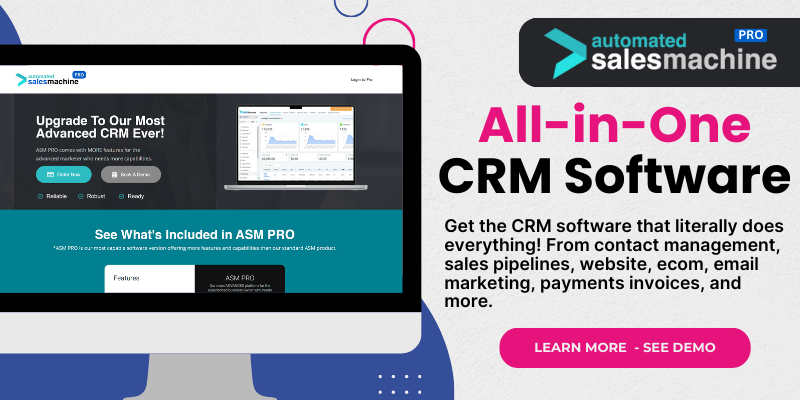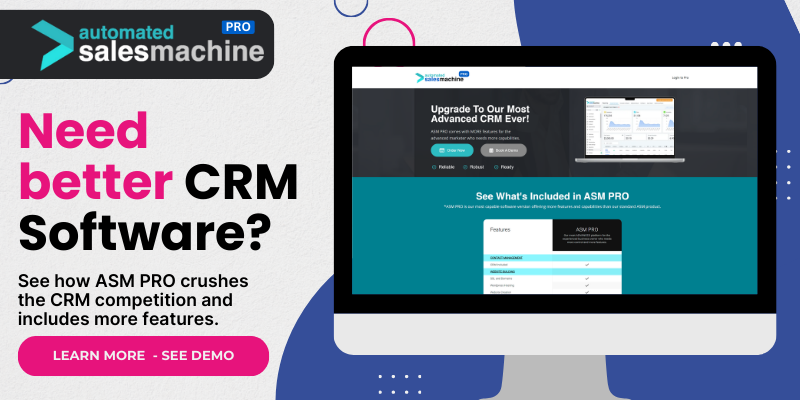Understanding CRM Software
Defining CRM
Let’s kick things off with what CRM stands for—Customer Relationship Management. At its core, CRM software helps businesses manage their interactions with customers and potential clients. Think of it as a digital hub where all your customer data, communication history, and even sales processes are organized in one place.
When I first started using CRM software, I was blown away by how much easier it made maintaining relationships with customers. Instead of juggling spreadsheets and emails, I finally had a centralized system that let me see all relevant information at a glance. It became my trusty sidekick in the world of sales and marketing.
The beauty of CRM software lies in its flexibility. It’s not just for sales teams; marketing and customer support teams can also leverage it to streamline their workflows and enhance the overall customer experience.
Key Features of CRM Systems
A good CRM system comes chock-full of features designed to make life easier for you and your team. One of the standout features is contact management. This allows you to keep detailed records of every customer interaction, making it easier to personalize future communications.
Another game-changer is automation. By setting up workflows, you can automate repetitive tasks, making sure no lead falls through the cracks. I personally set up automated follow-ups for my leads, and trust me, it made a world of difference in maintaining engagement.
Lastly, most CRM systems come with reporting and analytics capabilities. This means you can easily track performance metrics and gain insights into customer behavior. Analyzing this data helps in making informed decisions that can boost sales and improve customer satisfaction.
The Types of CRM Systems
CRM systems generally fall into three categories: operational, analytical, and collaborative. Operational CRMs focus on automating sales and marketing processes. This is where you get those handy tools for managing your leads and tracking sales activities.
Conversely, analytical CRMs are about analyzing customer data to improve business decisions. They compile data from different sources, providing a comprehensive view of customer interactions across all touchpoints. This type really helped me make data-driven marketing decisions that resulted in higher conversions.
Lastly, collaborative CRMs are designed to enhance communication and collaboration within different departments of a company. By sharing customer information across teams, we can work together more efficiently, ensuring everyone is on the same page when it comes to customer interactions.
Benefits of Implementing CRM Software
Improved Customer Relationships
One of the most tangible benefits of CRM software is the improvement in customer relationships. With all your customer information neatly organized, you can provide a more personalized experience. That shows customers that you genuinely care about their needs!
I can’t tell you how many times my CRM helped me recall important details about a client, which in turn made them feel valued. This tiny little touch can lead to increased loyalty, and loyal customers are often the best source of referrals.
Moreover, a seamless experience strengthens brand affinity. When customers feel understood and appreciated, they are more likely to stick around for the long haul. Believe me, I’ve seen this firsthand.
Increased Productivity
With CRM software, you could kiss inefficiencies goodbye! The automation features can take repetitive tasks off your plate, allowing you to focus on what you do best—connecting with clients and closing deals. I remember the days of manually entering data into spreadsheets, and oh boy, what a time waster!
Plus, having all your tools in one place means less time wasted switching between applications. Everything you need is at your fingertips. Whether it’s sending an email, tracking a deal, or updating a client’s information, a well-integrated CRM offloads much of that work.
In terms of team collaboration, CRM tools streamline communication, making it super easy to share information and coordinate efforts. Your team will know what’s going on with every client, which echoes back to that improved productivity factor.
Better Analytics and Reporting
Having access to robust analytics and reporting is another massive perk of utilizing CRM software. These insights can help you spot trends and identify areas for improvement. For example, I love to dig into my sales reports to see which products are resonating with my audience the most.
Furthermore, good CRM tools will allow you to track the effectiveness of your marketing campaigns. You can measure important metrics like lead conversion rates and customer acquisition costs. If something isn’t working, the data will highlight that, enabling swift adjustments.
Analytics also allow for better forecasting and planning. By drawing from historical data, you can make more accurate predictions about future sales trends, ensuring you’re ready to tackle whatever comes your way.
Challenges of CRM Implementation
Data Quality Issues
One of the biggest challenges you might face when implementing a CRM system is maintaining data quality. If your data is outdated or inaccurate, it can lead to poor decision-making. I learned this the hard way on more than one occasion.
To avoid this pitfall, it’s crucial to regularly clean and update your database. Performing audits and establishing a data governance policy can help keep your information accurate and reliable.
Additionally, encouraging your team to consistently enter new information into the system is vital. If everyone isn’t on board, you can quickly find yourself with a less-than-stellar database.
User Adoption Challenges
Another challenge you might encounter is user adoption. Let’s face it—change can be hard! Sometimes team members resist adopting a new system, especially if they’re used to doing things the old way. I’ve seen people roll their eyes at new tech, and it can be frustrating.
To make the transition smoother, consider investing in training sessions. Hands-on training and emphasizing the benefits can motivate the team to embrace the change. Trust me, once they see how the CRM can simplify their life, they’ll be on board.
It can also help to have a go-to person on the team who understands the system inside and out. That way, if anyone has questions, they can reach out without feeling intimidated.
Cost Considerations
Lastly, let’s talk about costs. While CRM systems can offer incredible returns on investment, they often come with a significant upfront cost. From software licenses to implementation and training expenses, you need to budget accordingly.
However, don’t let the initial price tag scare you away! Weigh the potential benefits against the costs. In the long run, a solid CRM can save you a lot more than it will cost by enhancing customer retention and streamlining operations.
Additionally, explore various pricing models. Many CRM providers offer flexible payment plans, including monthly subscriptions or one-time fees. Make sure to choose a solution that fits your budget and meets your business needs.
Choosing the Right CRM for Your Business
Identifying Your Needs
Before you go diving into CRM software options, you need to assess your business needs. Take a step back and think about what you want the system to accomplish. Do you need primarily sales tracking, or is marketing automation more critical to your operations?
Having clear objectives will help narrow down your choices. I’ve always seen success when I take the time to pinpoint the specific pain points I want the CRM to address. This ensures I don’t waste my time and resources on software that doesn’t cater to my particular needs.
It can even be helpful to involve key stakeholders from your team in this assessment phase. Gathering insights from different angles will give a clearer picture of what’s required from a new CRM system.
Evaluating CRM Vendors
Once you know what you need, it’s time to evaluate your options. Look for reputable vendors that offer demos or trials. This will allow you to get a feel for the interface and features before making a commitment. The last thing you want is to be stuck with software that doesn’t meet your expectations!
Read reviews and seek recommendations from colleagues or industry peers. Hearing from others who have experienced the software firsthand can provide valuable insights. I’ve often relied on trusted reviews to guide my decisions, and it’s always paid off.
Don’t be shy about asking vendors questions. Find out how they handle customer support, what kind of training resources they offer, and how software updates are managed. The support system for the CRM can be just as important as the software features themselves.
Implementation and Onboarding
Once you’ve chosen the right CRM, the implementation phase begins. This can either be smooth sailing or a bit rocky – it’s all in how you approach it. Start by planning a realistic timeline for the implementation process. Rushing this step can lead to problems down the road.
Involving the entire team from the get-go can enhance buy-in and make for a successful rollout. Set up training sessions where everyone can learn together. It’s a fantastic way to create excitement around the new system!
After going live, monitor how things are going. Be open to feedback and make adjustments as necessary. Continuous improvement will ensure your CRM truly benefits your organization.
Conclusion
In the end, CRM software is a powerful tool that can transform how you connect with your customers. By understanding its components, benefits, challenges, and implementation strategies, you can leverage CRM to boost your business efficiency and customer satisfaction. It’s been a game-changer for me, and I bet it can be the same for you!
FAQ
What is CRM software used for?
CRM software is used to manage and analyze customer interactions and data throughout the customer lifecycle. It aims to improve customer service, assist in retaining customers, and drive sales growth.
How can CRM improve customer relationships?
CRM improves customer relationships by centralizing information, allowing for personalized communication, and enabling timely follow-ups that make customers feel valued.
What features should I look for in a CRM system?
Look for features like contact management, automation capabilities, analytics and reporting, integration options with other tools, and mobile access to ensure it fits your business needs.
What are common challenges when implementing a CRM?
Common challenges include data quality issues, user adoption resistance, and cost concerns. Addressing these proactively can make the implementation process smoother.
How do I know which CRM is right for my business?
Assess your business needs, evaluate different CRM vendors, and consider their features, support, and pricing. Getting demos can also help you find the right fit.

